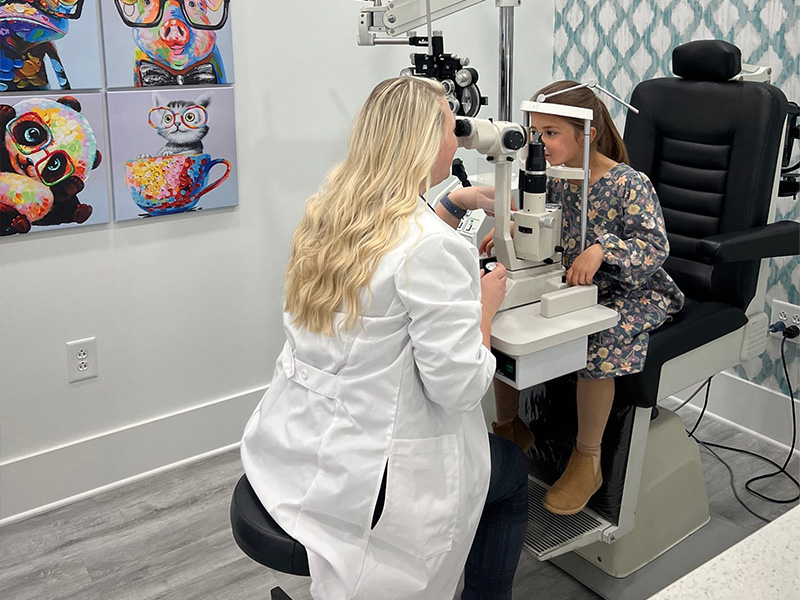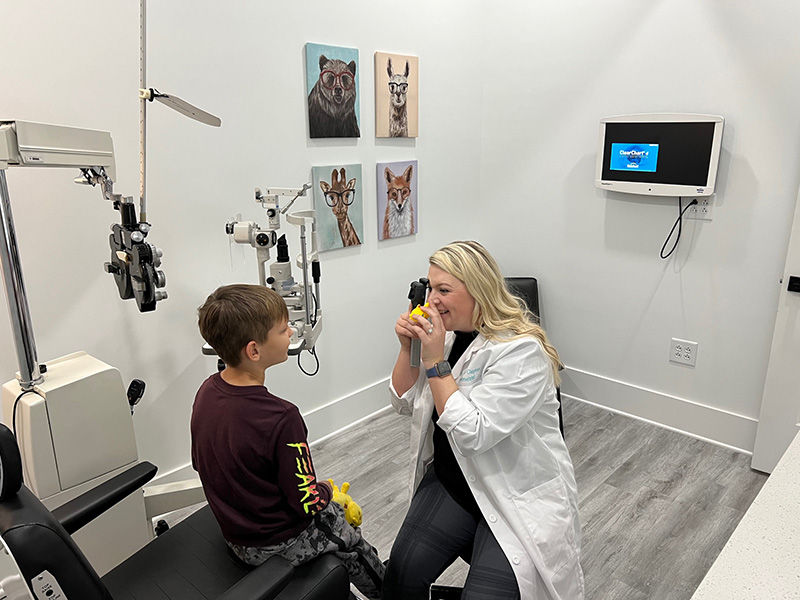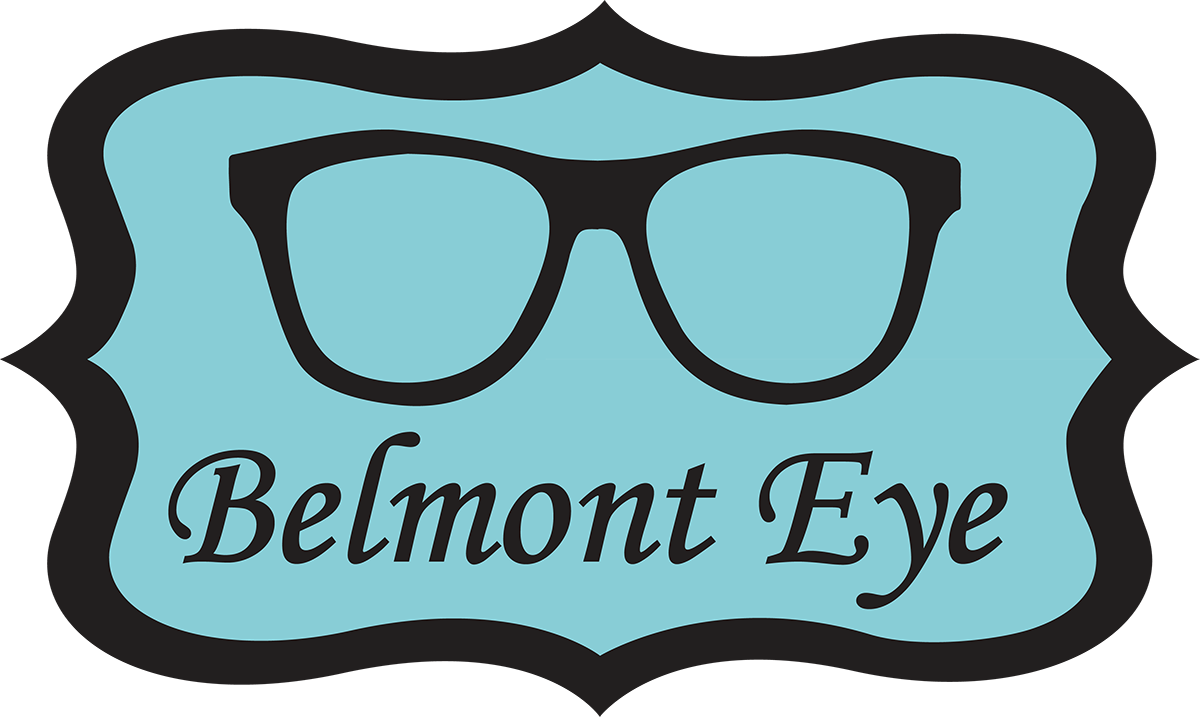Pediatric Services
Pediatric Services
Eye & Medical Care For Children
Pediatric Services
Eye & Medical Care For Children



Pediatric Services
Infant Eye Exams 6‑12 Months
The American Optometric Association recommends a child’s first eye exam be as early as 6 months of age. InfantSEE is a public health program offering a no cost eye exam to children 6 to 12 months old. These exams ensure that vision becomes an integral part of a baby’s wellness care. Belmont Eye is proud to partner with InfantSEE. During these exams your optometrist evaluates prescription, eye tracking skills, and ocular health to be sure your baby is reaching their visual milestones. We recommend these exams occur in the morning or after a nap.
Developmental milestones during 1st year of life
- Visual development within 10 inches of infants face (parents' faces)
- Hand-eye coordination (following objects and grabbing for them)
- Eye muscle development (building strength to track)
- Depth perception begins
- Accommodation (eye focusing muscles)
- Color vision development
- Hand-eye-foot-body awareness
- Holding objects
Pediatric Services
Preschool Eye Exams 2‑5 Years
Prior to your child attending preschool you should schedule your child’s next comprehensive eye exam, typically between the ages of 3 and 5 years old. While many parents think a vision screening is enough, silent eye problems often go undetected and can alter a child’s quality of life. Vision is more than having 20/20 eyesight. At this stage in life, children experience drastic growth in intellectual and motor skills. Your child’s eyes are the windows to proper development such as learning, playing, coordination, etc.
This is the age group where oftentimes a lazy eye or an eye turn is found. Lazy eye, or amblyopia, is when one of the eyes does not see clearly compared to the other. This can be caused by a difference in prescription, eye turns, or something blocking vision. An eye turn, or strabismus, is when one or both of the eyes turns inward or outward. The earlier these conditions are detected and treated, the higher the success rate and quality of life. This is also when developmental delays can arise.
Developmental milestones during preschool years
- Fine motor skills
- Visual perception
- Depth perception
- Visually guided hand-eye-body coordination
- Normal 20/20 vision develops by age 5
Pediatric Services
School Aged Eye Exams 6‑18 Years
It is very important to have your child’s vision checked during their first year of school. It is common for a child to squint, excessively blink, or rub their eyes frequently when they have difficulty seeing. These signs are typically first noticed in the classroom. Up to 80% of a child’s learning is through vision. As children progress in school, their visual demands increase. They develop proper reading and writing skills as well as athletic skills. Uncorrected vision can cause children and teens to suffer academically, athletically, and socially. We recommend a yearly eye exam after their first year in school. The prevalence of myopia (near-sightedness) has been increasing significantly in the last decade. Environmental factors such as time spent on tablets, computers, phones and the limited amount of time spent outdoors have been cited as potential factors contributing to the development and progression of myopia.
Developmental milestones during school years
- Word recognition
- Reading comprehension
- Reading Retention
- Wide field of vision
- Effective hand-eye coordination
Pediatric Services
Proper Eye-Teaming
Did you know that 80% of a child’s learning is through vision? The visual system is key for brain processing and development of visual information. Binocular vision is when both eyes work together to gather visual information. When binocularity or “eye- teaming” is dysfunctioning, the eyes don’t align properly. Therefore leading to a binocular vision dysfunction. This can be true for any child suffering from strabismus, amblyopia, ADD/ADHD, poor coordination, double vision, anxiety, and many more. A binocular vision assessment differs from a comprehensive eye exam in the sense that it looks at the eyes individually and as a team and determines how they are functioning for every day tasks. These tasks include accommodation (focusing), convergence, depth perception, eye tracking, and fusion.
Symptoms Include:
- Eye fatigue when reading
- Trouble concentrating
- Difficulty with reading comprehension
- Skipping lines when reading
- Words appearing to run together
- Headaches
Pediatric Services
Blue Light
What is all the hype around blue light? Sunlight is made of ultraviolet radiation (UVA and UVB) and short wave energy (blue light), which can cause acute and chronic damage. Infants and young children are known to have a higher transmittance level of these harmful rays due to their early development, making them more susceptible to energy-related injury. Exposure to these high levels of UV can cause numerous eye conditions such as corneal damage, cataracts, and macular degeneration. Blue light from our screens is “artificial sunlight”. Exposure to blue light has the potential to cause retinal damage and interrupted sleep hygiene. Children of all ages should be advised of the benefits of sunglasses when outside and blue light glasses that effectively block at least 99% of UVA and UVB during screen use.
The prevalence of myopia (near-sightedness) has been increasing significantly in the last decade. Environmental factors such as time spent on tablets, computers, phones and the limited amount of time spent outdoors have been cited as potential factors contributing to the development and progression of myopia.
Pediatric Services
Medical Exams
Kiddos get sick and have accidents too! It might be a red eye, a stye, or a scratched eyelid. There are many things that can cause your little one to be uncomfortable and in pain. A blocked tear duct can cause excessive watering or mucous build up. A red eye could be contagious requiring your little one to miss days of school. A stye can be painful to the touch. These are all reasons to see your optometrist for more specific treatment options versus seeing a pediatrician or urgent care.
Example of conditions
- White pupil
- Red eye/ pink eye
- Stye
- Abrasion
- Allergies (itchy watery eyes)
- Nasolacrimal duct obstruction (build up of tears and mucus at inner corner of eye)
- Eye(s) turning inward or outward
- Head trauma
Pediatric Services
Community School Screenings





Give Yourself The Gift Of Clear Vision.
Schedule an appointment with your eyecare provider today.
